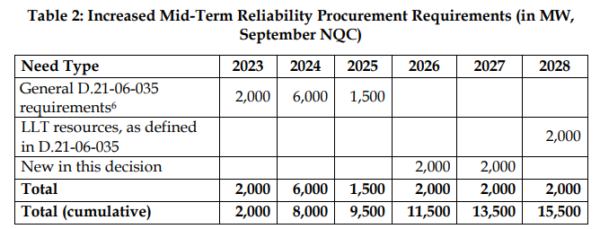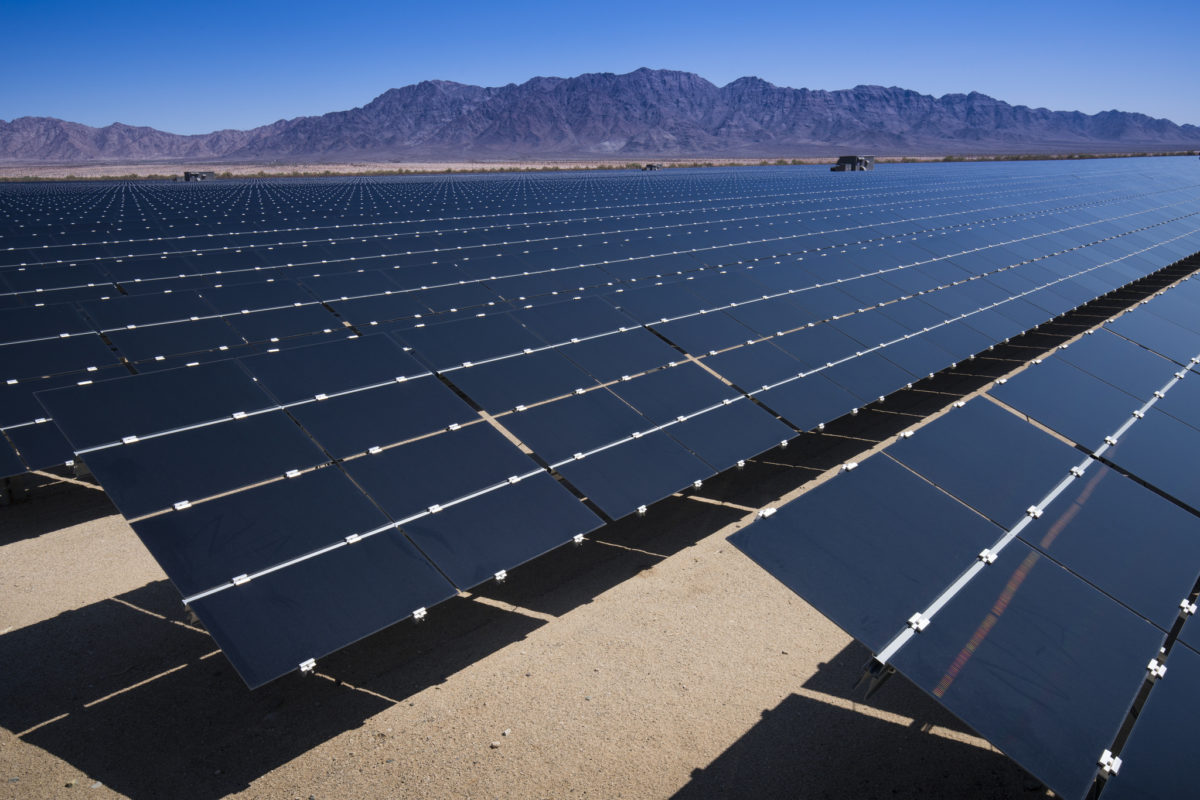Through 2027, California will now add 35% more solar energy to its grid than previously planned. The California Public Utilities Commission (CPUC) ordered an additional 4 GW to be interconnected by load-serving entities.
The addition of 4 GW brings the state’s mid-term reliability procurement requirement to 15.5 GW by 2027. To date, California has nearly 40 GW of capacity installed, meaning the procurement plan alone would require roughly 40% growth upon cumulative operating assets.
The call for more solar came as a result of updated load forecasting from the California Energy Commission that suggested electricity demand is increasing faster than what was observed during the June 2021 procurement order for 11.5 GW of new capacity. The CPUC said additional capacity is needed to address “the increasing and accelerating impacts of climate change, [and] the likelihood of some additional fossil-fueled generation resource retirements that were not anticipated at the time.”
The Commission added that the likelihood of project delays beyond 2026 in the procurement of long lead-time resources led to a raised procurement order. It also projected that California will not be able to rely on electricity imports from other states, particularly from the Pacific Northwest, a region which the state currently taps for meeting seasonal demand.
The original 2021 order called for 2 GW of resources in 2023, another 6 GW in 2024, and installments of 1.5 GW in 2025 and 2 GW in 2026, and now brings another 4 GW in requirements throughout 2026 and 2027.

“We believe the conclusion to be consistent with our internal analysis on system reliability needs,” said Paul Doherty, spokesperson for utility Pacific Gas & Electric.
Doherty said PG&E shares the commission’s urgency regarding the pace and effects of climate change and supports the commission updating its reliability assessment with higher load forecasts, volatility and increased assumptions of fossil fuel plant retirements.
Longer-term, the CPUC estimates that the state will need as much as 35 GW of new resources on the system to meet both reliability and emissions goals.
In response to the increased procurement order, the California Community Choice Association said that interconnection costs and delays stand in the way of these goals. “The commission should work with the CAISO to improve the interconnection study process, urge transmission owners to shorten interconnection times, and reevaluate the deliverability methodology as the current method is too restrictive,” it stated.
CPUC responded that it is not within its jurisdiction to control interconnection, and that while it is “sympathetic” to load-serving entities’ desire to interconnect more quickly, “shortcuts” should not be taken so as to avoid reliability issues.
This content is protected by copyright and may not be reused. If you want to cooperate with us and would like to reuse some of our content, please contact: editors@pv-magazine.com.









Energy storage is the answer to intermittent supply from renewables that will be our future. Weather we pump water behind existing hydro-electric dams, use hydrogen generation or batteries to store the excess solar and wind energy, for later release and distribution, that is the decisions that really need to be addressed today. The battery system, employed by PG&E at Moss Landing, is a good start and helped save the grid back in September of 2022 during the evening crunch, along with thousands of rooftop solar customers who sent their own battery storage electrons to the grid. We need more of both, but NEM 3.0 will curtail any future rooftop solar with battery systems because the utilities will not pay a fair price for the electricity received from the owners of systems build and connected to the grid after April 14, 2023. Residential battery storage cost twice what larger grid tied batteries systems per kilo watt hour of storage and will never get the pay back they need to warrant the installation of Lithium batteries. Only if battery storage prices drop by 50% from the current prices will residential storage become a viable option under NEM 3.0 in the future. “CPUC responded that it is not within its jurisdiction to control interconnection, and that while it is “sympathetic” to load-serving entities’ desire to interconnect more quickly, “shortcuts” should not be taken so as to avoid reliability issues.” This is because adding solar or wind without storage leaves the system unreliable once the sun sets and homeowners get home from work and crank up the air conditioning and turn on their stoves for the evening meals. Localized neighborhood storage systems would be the answer if the utilities would add them to their grid at the same time new renewable energy sources come online.